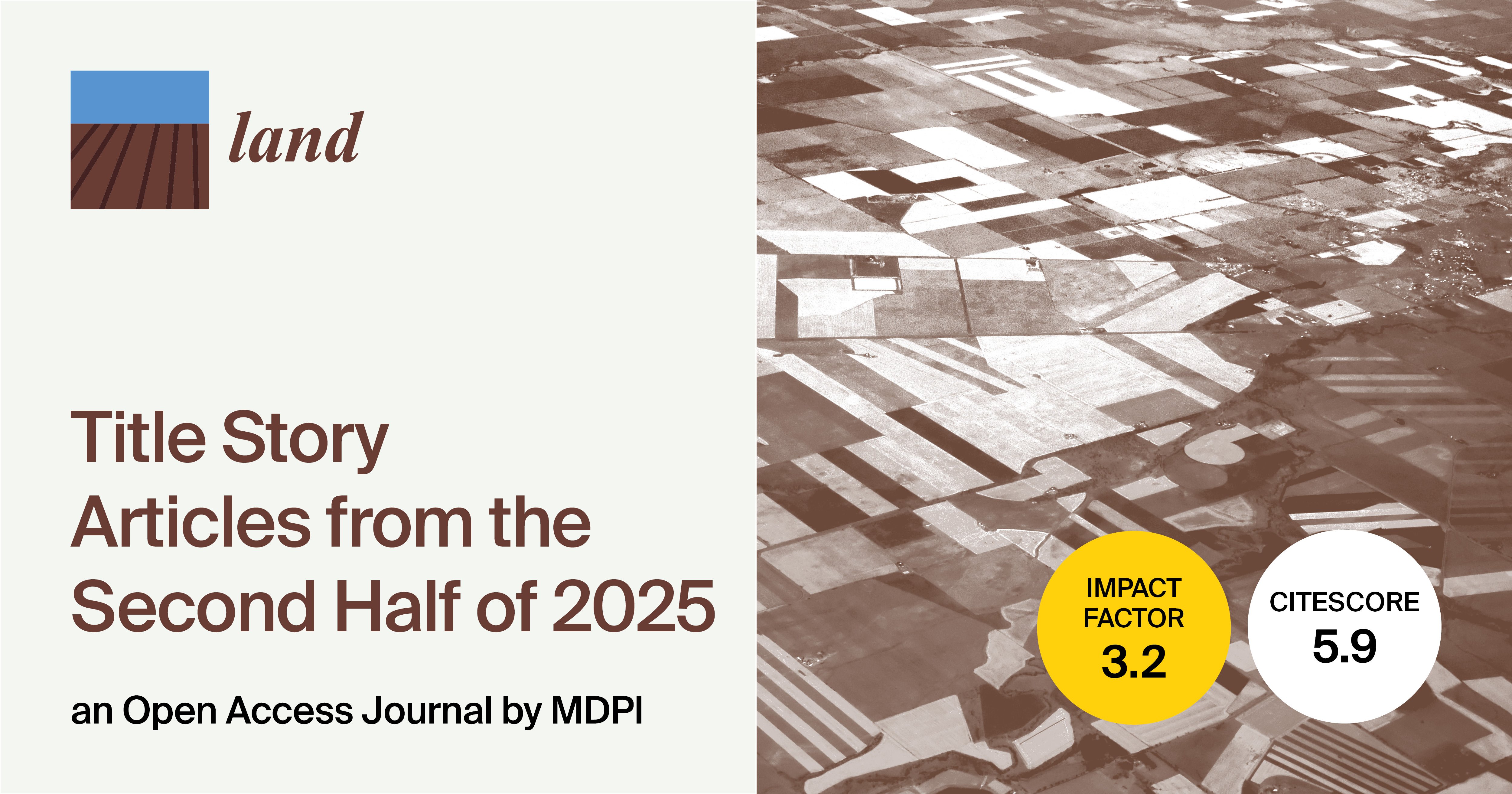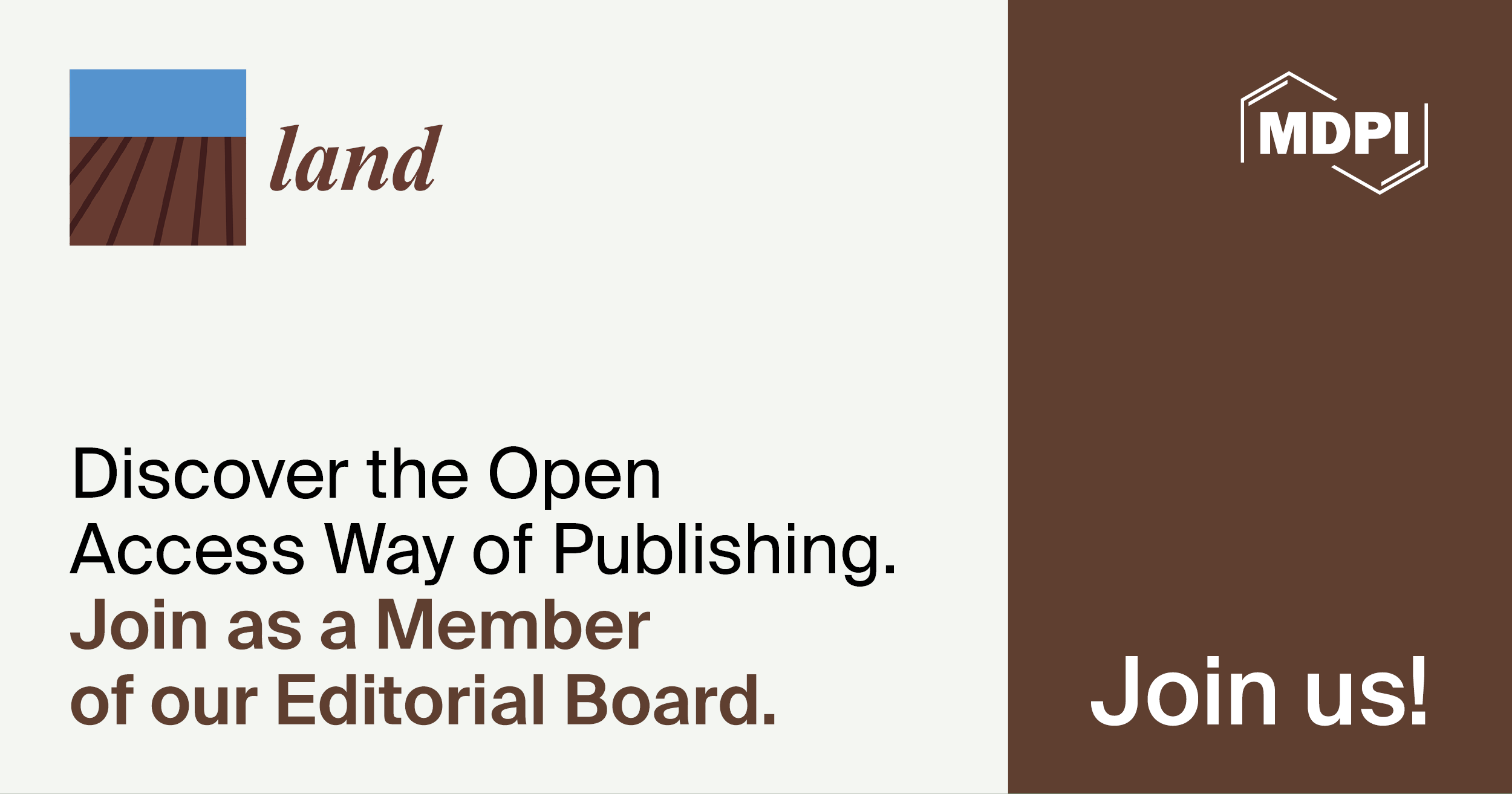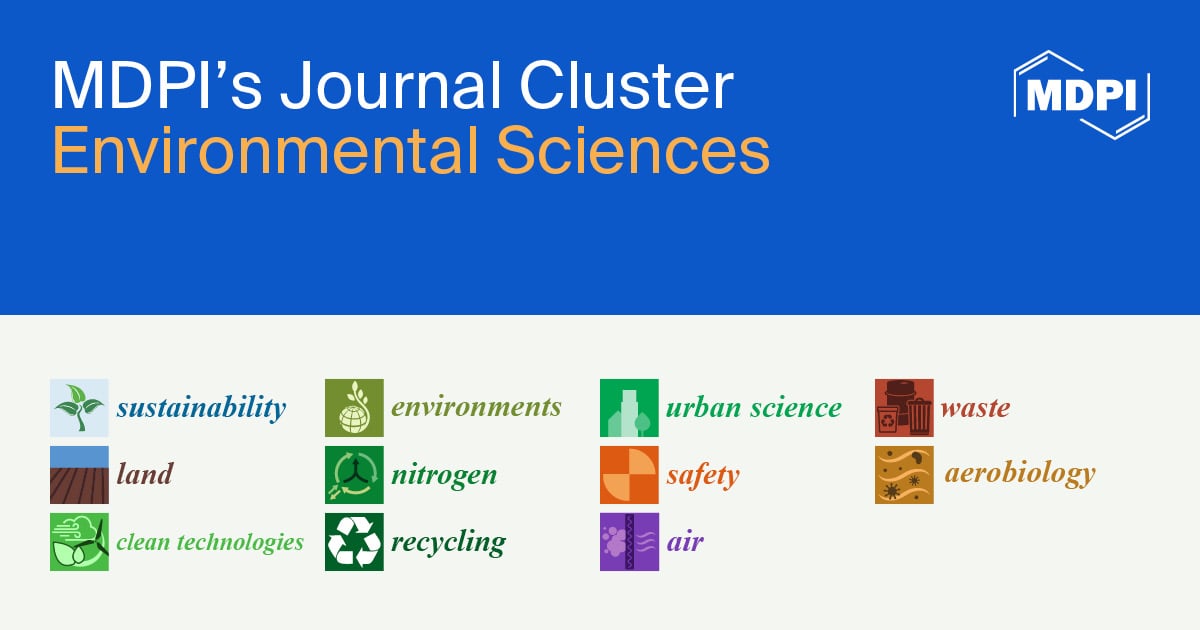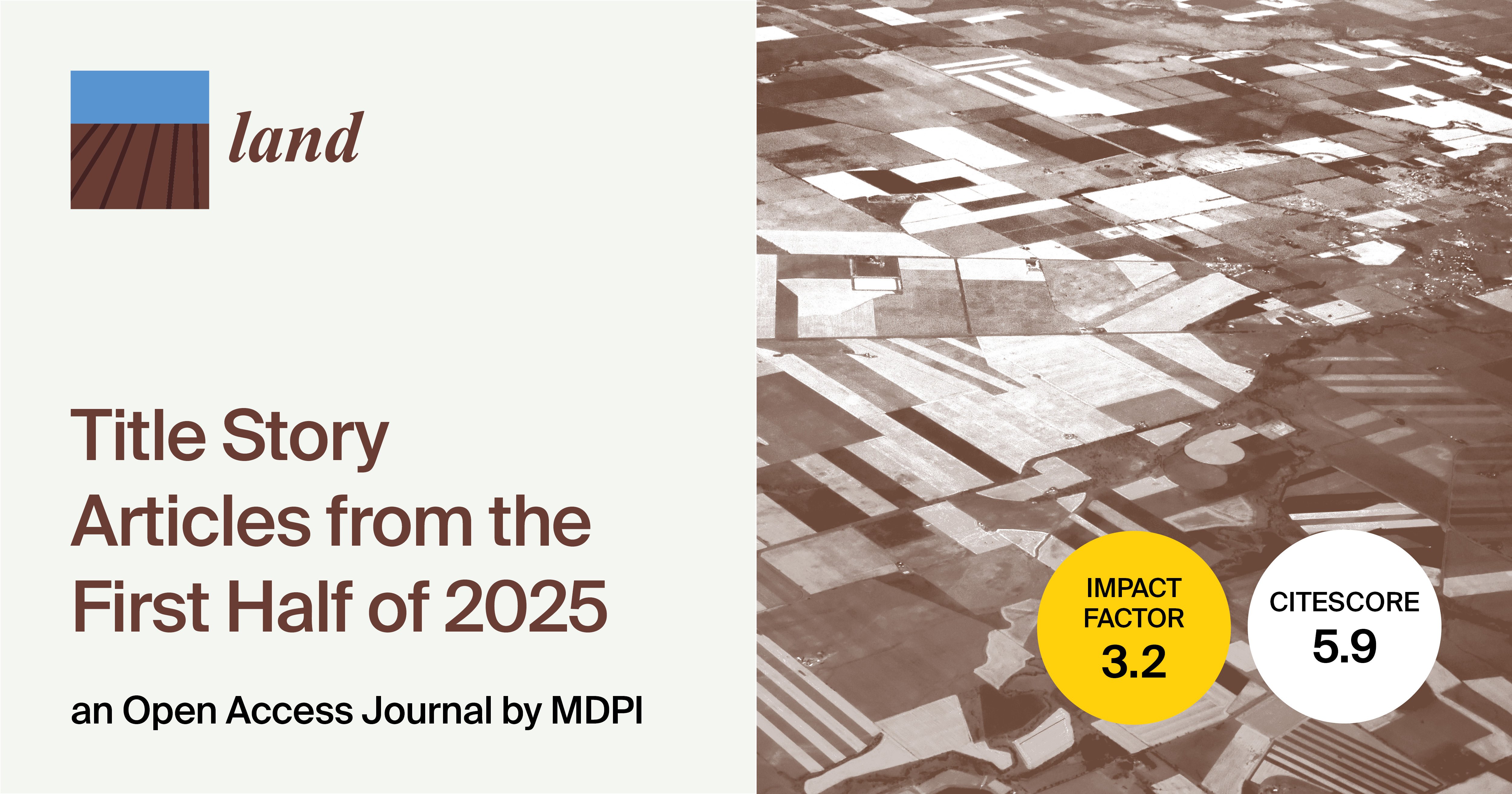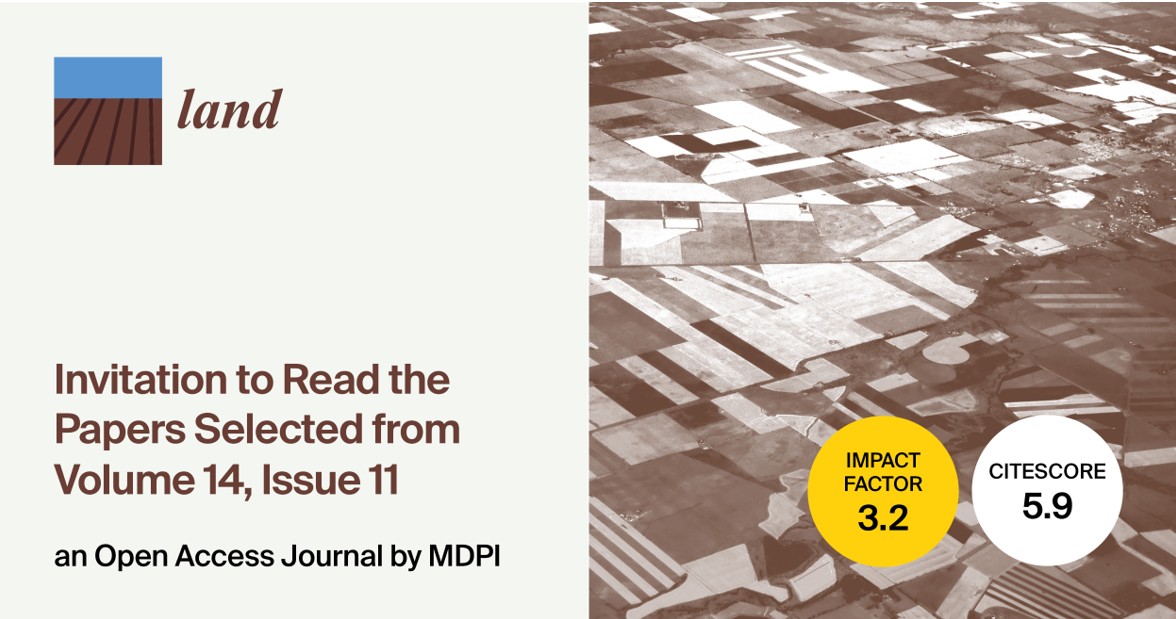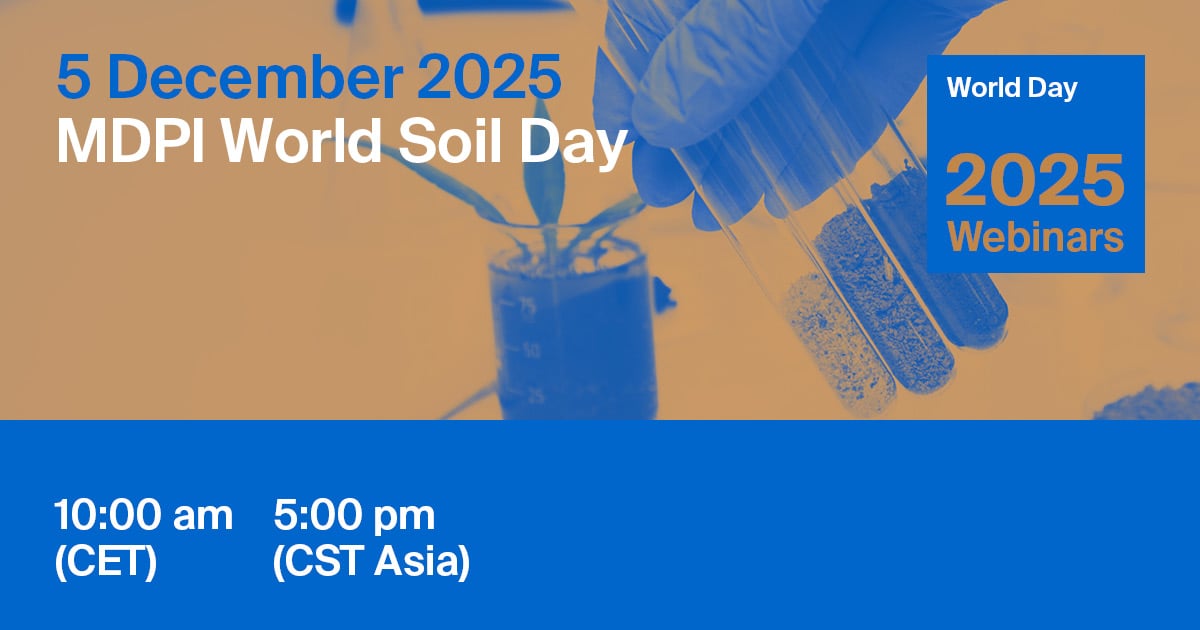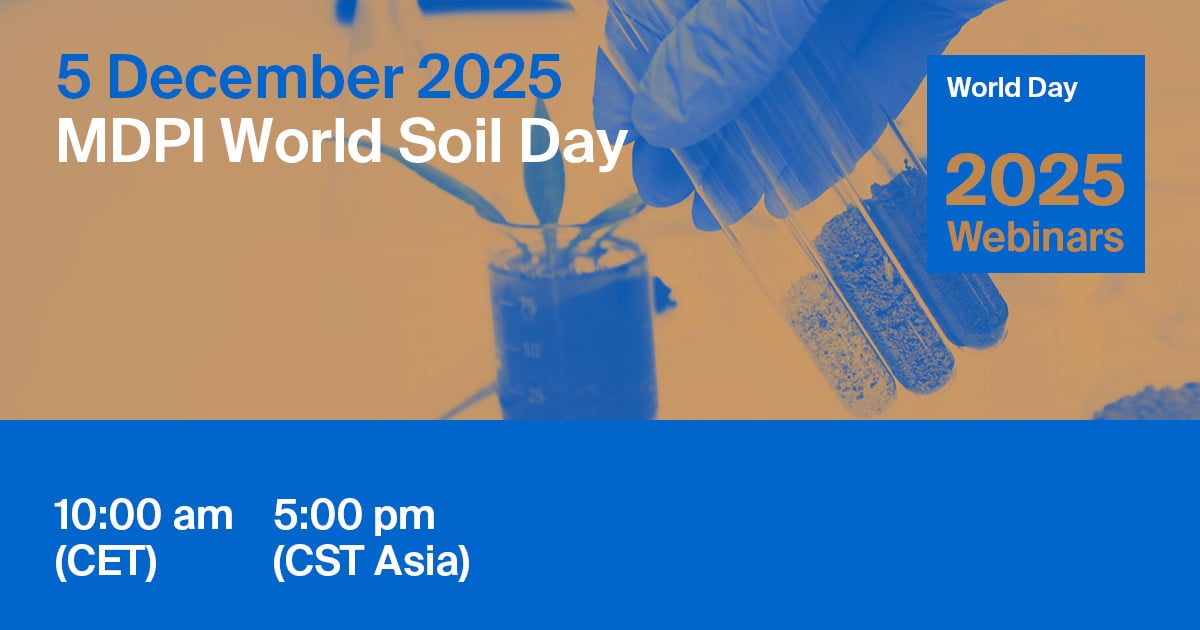- 3.2Impact Factor
- 5.9CiteScore
- 16 daysTime to First Decision
News & Conferences
Latest News & Announcements
Latest Conferences
Propose a Conference Collaboration
Promote and publicise your upcoming conference with MDPI.
All News & Conferences
News & Announcements
Land | Title Story Articles from the Second Half of 2025
18 December 2025
News & Announcements
Land | Highly Cited Review Papers Published in 2024
17 December 2025
News & Announcements
Land | Recruiting Editorial Board Members for the “Land Use, Impact Assessment and Sustainability” Section
15 December 2025
News & Announcements
MDPI’s Journal Cluster of Environmental Sciences
12 December 2025
News & Announcements
International Mountain Day—“Glaciers Matter for Water, Food and Livelihoods in Mountains and Beyond”, 11 December 2025
11 December 2025
News & Announcements
Land | Title Story Articles from the First Half of 2025 (II)
11 December 2025
News & Announcements
Article Layout and Template Revised for Future Volumes
11 December 2025
News & Announcements
Land | Invitation to Read Selected Papers from Volume 14, Issue 11, November 2025
8 December 2025
News & Announcements
World Soil Day—“Healthy Soils for Healthy Cities”, 5 December 2025
5 December 2025
5 - 5 December 2025
News & Announcements
MDPI Webinar | World Soil Day, 5 December 2025
28 November 2025
News & Announcements
Land | Feature Papers from the First Half of 2025 (IV)
27 November 2025
of 40


